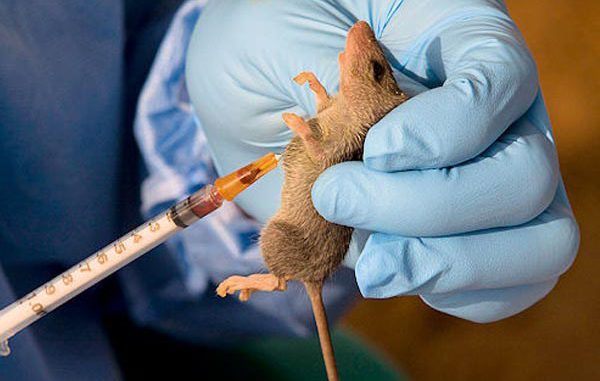
They were all together in peace until squabbles between siblings erupted in the woodland; COVID-19 was tall, thin and bony but boldly huddled out into the globe and makes us shiver like seaweed at the mercy of a wind.
Lassa fever who had crouched among the tangled viruses was upset that coronavirus who came from another woodland would all of a sudden became popular and now attacks with a blinding effulgence.
It was on January 29, 2020 that the Lagos State Government through the state’s Commissioner for Health, Prof Akin Abayomi, via his Twitter handle @Prof Akin Abayomi, disclosed that, “there is outbreak of Lassa fever in Nigeria , let us stay healthy and safe.’’
Just as when we thought the situation was not alarming, COVID-19 crept in like a thief in the night, usurping Lassa fever, its sibling. Today, Lassa fever whom we thought was a lazy sibling is killing more people in Nigeria as a whole.
The death toll from the latest round of Lassa fever outbreak in Nigeria has risen to 188, as of April 5, 2020, the Nigeria Centre for Disease Control said, with a case fatality rate (CFR) of 19.5%, which is lower than the CFR for the same period in 2019 (22.7%). The cumulative death of 188 reported is much higher than the 12 reported for COVID-19 within three months.
The number of suspected cases has significantly increased compared to that reported for the same period in 2019 with 4, 287. In the same vein, the number of confirmed cases has increased significantly to 963 compared with the situation in the same period last year.
The questions to keen observers are: Do we have enough epidemiologist experts? Do we have enough infectious disease doctor and laboratory technicians in our hospitals? Do we have rats and rodents in our homes? Your answer is as good as mine.
Residents might not have an idea how prevalent Lassa fever could be or how dangerous it could be. People need to know what is happening… You might not hear about it often, it might be rare, but it’s happening, and it’s happening in our mist. Community engagement and sensitisation activities must be in place across the country. It’s better we put the information out there; the situation we’re dealing with and how we can prevent it.
Lassa fever is primarily spread by rats. Lassa fever is a heightened viral haemorrhagic fever illness that is transmitted to humans through contact with food or household items contaminated with rodent urine or faeces. Person-to-person infections and laboratory transmission is almost possible. Early treatment and rehydration improves the chance of survival. Lassa fever causes outbreak almost every year in different parts of West Africa. A medical practitioner once described the disease as “second Ebola” and called for tougher measures to contain it.
It has to be noted that Lassa fever belongs to the same family as the Ebola and Marburg viruses but is much less severe. The disease is endemic to the West African country and its name comes from the town of Lassa in Northern Nigeria where it was first identified in 1969.
The World Health Organisation said that prevention of Lassa fever is reliant on promoting hygienic conditions to discourage rodents from entering homes. In health care settings, staff should consistently implement standard infection prevention and control measures when caring for patients to prevent nosocomial infections.
Similarly, according to the WHO, the antiviral drug, ribavirin, appears to be an effective treatment for Lassa fever, “if given early on in the course of the clinical illness.’’ Nigeria has five laboratories with the capability to diagnose the disease. It was noted that travellers from areas where Lassa fever is endemic can export the disease to other countries, although this rarely occurs.
Understanding the scourge of Lassa fever is in line with the John Wesley phrase that says, “Cleanliness is next to godliness.’’ It is imperative for members of the public to ensure and maintain adequate personal hygiene and environmental sanitation at all times. This can be done by storing household refuse in sanitary refuse bags or dust bins with tight-fitting covers to avoid infestation by rats and rodents. Also, the refuse should be disposed properly at designated dump sites. It’s therefore important that awareness be raised and let the general public know that it spreads to humans through food or household items contaminated with rodent urine or faeces. Some of the symptoms of Lassa fever include high fever, headache, muscle aches, haemorrhaging under the skin and heart and kidney failures. The expert further said it had an incubation period of between six and 21 days and can be transmitted through contact with an infected person via bodily fluids and excretion.
Gone were the days when rat and or rodents were found in the pits and decrepit trunks in the remote areas, they are now found at our luxurious homes in search of food. But we must get rid of these rodents before they kill us quietly. However, halting the resurgence of Lassa fever will require a concerted effort by many health care organisations, health care personnel and both state and federal governments. Again, it is said, “an ounce of prevention is better than a pound of cure.’’ Not only must the public keep an eye out, the Federal Government’s eye must be bulging with attention. COVID-19, its big brother, has got to a branch and it is coming down with a big crash. Lassa fever must come crashing as well.
Anjorin, a public affairs analyst based in Lagos, wrote in via olusanyaanjorin@gmail.com
+234 8032826650


Be the first to comment